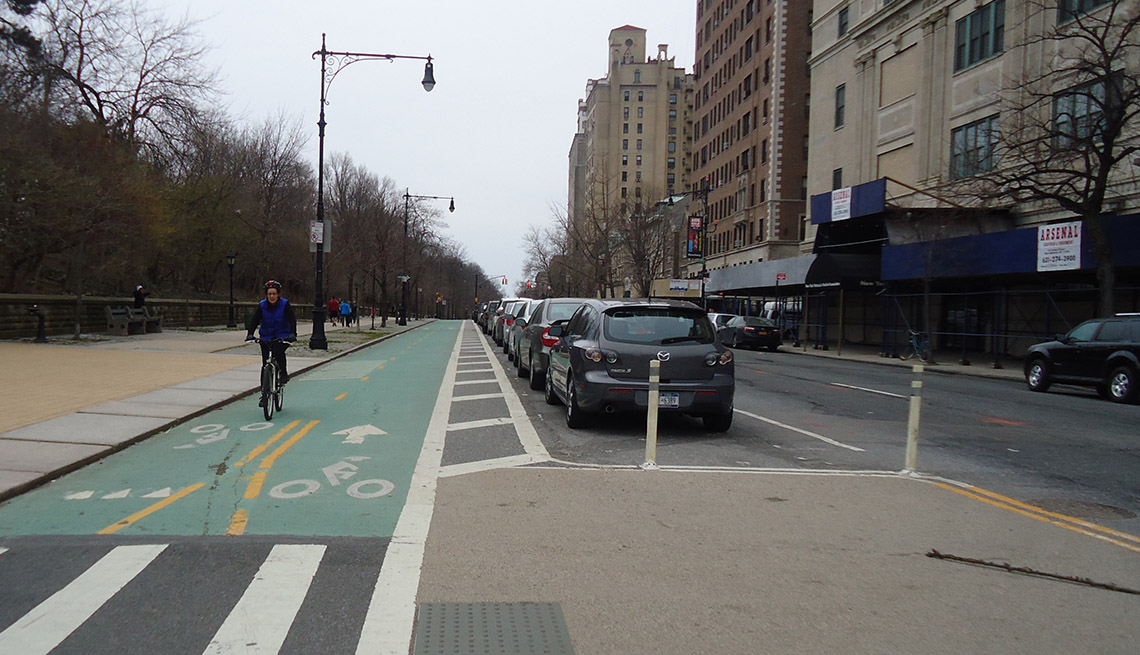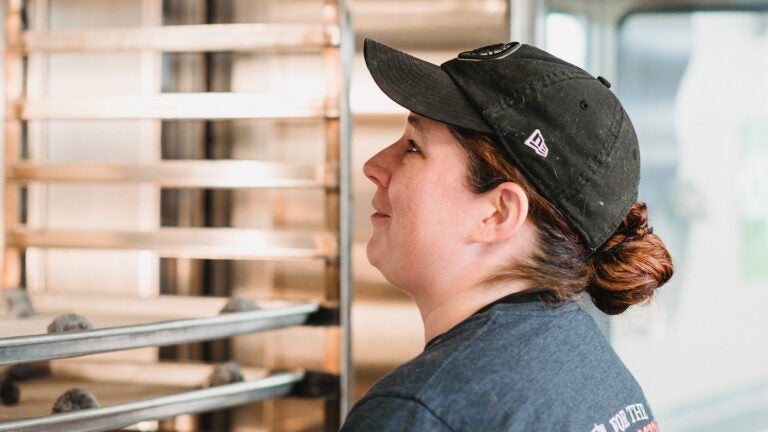
- Select a language for the TTS:
- UK English Female
- UK English Male
- US English Female
- US English Male
- Australian Female
- Australian Male
- Language selected: (auto detect) - EN
Play all audios:
Marvin R. Anderson, a retired lawyer, has spent much of his life working to boost St. Paul's African-American community. "Encouraging bicycling and walking are important to
reweaving the Rondo neighborhood," Anderson says about the once-thriving, tight-knit community that was displaced and destroyed in the 1960s by construction of Interstate 94.
"Biking and walking are healthy. Biking and walking can save people money. We need to create a culture of biking and walking." Barbara McCann of USDOT notes, "Safe bicycling
conditions provide low-income Americans with an opportunity to get to jobs, education, stores and transit so they don't have to pull together a lot of money to buy a car." Being
able to thrive without a car is essential to many African-Americans, one-third of who have no access to a car, and Latinos, one-quarter of who are carless, according to a report by the
Leadership Conference Education Fund. For individuals who don't own a car or have access to one, bicycling represents important pathways to opportunity. Bicycle parking at a residence
in Seaside, Florida Photo by Melissa Stanton "A big thing we could do to help low-income families is to make it easier to live without a car," says Gil Penalosa of 8 80 Cities.
"And it would help middle class families to switch from two cars to one." He adds that the average cost of owning and operating one car is still $8,500 a year, even after the
recent slide in gasoline prices. 8. SAVES MONEY FOR TAXPAYERS In an era when streets and sidewalks across the country are in disrepair, bicycle projects can save us a bundle in maintaining
and expanding our transportation systems. Even protected bike lanes are "dirt cheap to build compared to road projects," says Gabe Klein, a partner at Fontinalis, a venture
capitalist firm founded by Ford Motor Co. Chairman Bill Ford. When he was the transportation commissioner in Washington, D.C., and, later, Chicago, Klein launched two of the nation's
most ambitious programs for building innovative bike projects. Spaces for drivers, bicyclists and pedestrians in Durham, New Hampshire, home of the University of New Hampshire. Photo by
Melissa Stanton R.T. Rybak, mayor of Minneapolis from 2001 to 2013, now CEO and president of the Minneapolis Foundation, stresses that cities everywhere need to be more efficient about the
money they spend to move people. "We need to get more use from the streets we already have," Rybak said. "It really is the idea that bikes belong." 9. HEALTH CARE SAVINGS
The health benefits of bicycling look almost like a miracle. Moderate physical exercise such as bicycling for only 30 minutes a day reduces a person's chances of diabetes, dementia,
depression, colon cancer, cardiovascular disease, anxiety and high blood pressure by 40 percent or more. Since tens of millions of Americans receive their health care from federal, state and
local governments (i.e., Medicare, Medicaid, military and public employees' health plans), an American taxpayer who never pedals a bike will still enjoy economic benefits if other
people do. This stick-figure family in Loveland, Colorado, is a bicycle rack. Photo by Melissa Stanton Employees and shareholders at businesses have a stake in bicycling, too. QBP a large
bicycle products distributor in suburban Minneapolis, encourages its employees to bike to work through a series of generous incentives, which cost the company $45,000 a year. However, QBP
figured it was the right thing to do since the company makes its money from bicycling. Turns out, it was the right thing to do for economic reasons as well. The firm's health care costs
dropped 4.4 percent in the first two years, which translated into $200,000 a year in savings. By contrast, other companies suffered an average 25 percent jump in health care costs over the
same period. 10. A GREENER ENVIRONMENT Transportation accounts for more than a quarter of all greenhouses gases, the second largest sector after electricity (30 percent), according to the
U.S. Environmental Protection Agency. A study from the Worldwatch Institute found that swapping a car for a bike on short commutes of four miles to work and back would generate 2,000 less
pounds of carbon every year — which adds up to a five percent reduction in the carbon footprint of an average American. More bicycles on the streets and fewer cars also lessen other forms of
air and noise pollution. P.S. PEOPLE OF ALL AGES LIKE TO BICYCLE Contrary to myth, bikes aren't only for kids, and bicycling as a means of exercise and transportation is not the sole
purview of young, male, ultra-fit daredevils. As street-level bicycling infrastructure improves and expands, the number of older, younger, female and inexperienced bicyclists is rising,
notes Martha Roskowski, vice president of PeopleForBikes. "The biggest jump we're seeing in biking is among older people," Roskowski says. Riders age 50 and over pedaled an
estimated 2.6 billion miles rides in 2009, according to the latest data from the National Household Travel Survey conducted by the USDOT. That's more than a six-fold increase from 1995,
when that age group covered less than 400 million miles. _Jay Walljasper, author of "The Great Neighborhood Book," consults, writes and speaks about making communities healthier
and happier for everyone._ _Published September 2016_ RELATED ARTICLE: Street-Level Solutions for Safer Cycling



